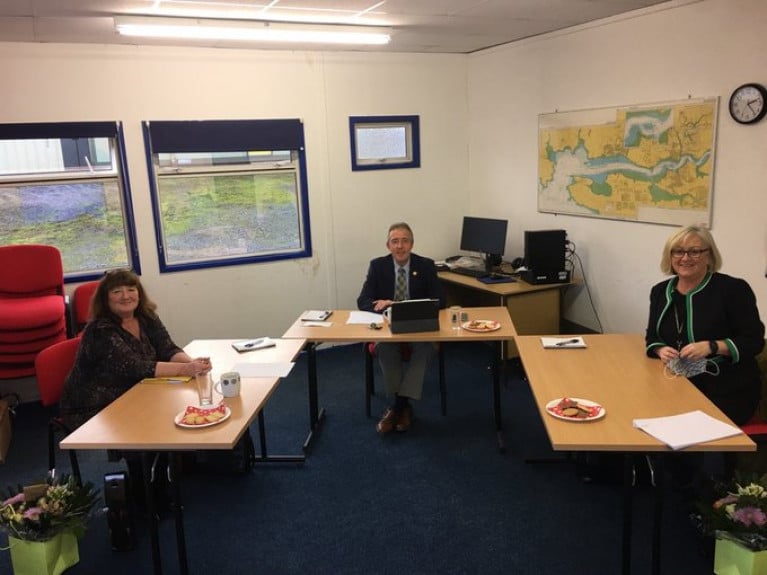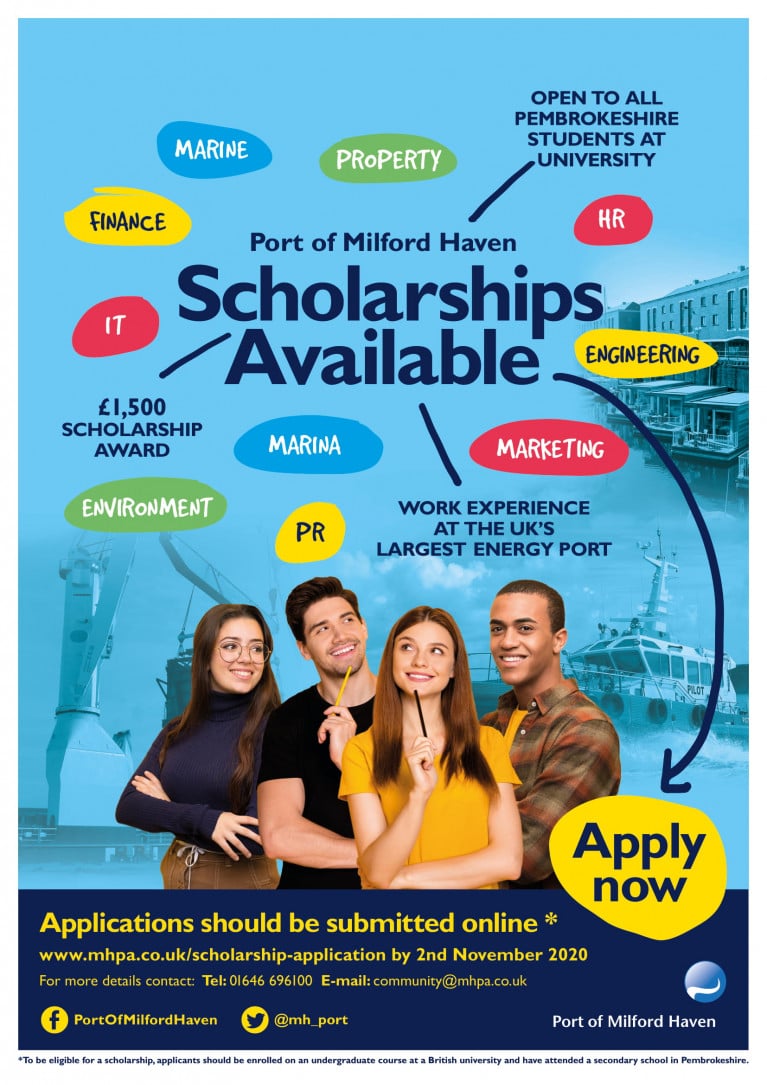Displaying items by tag: Port Scholarships
South Wales Port Awards Pembrokeshire Students With Port Scholarships
In south Wales, four Pembrokeshire students have been successful in securing scholarships from the Port of Milford Haven under its prestigious Scholarship Scheme as Afloat previously reported.
Launched in 2003, the Port (including the ferry terminal at Pembroke Dock) has already supported over 70 students through a financial award and work experience.
This year Ella Staden-Coats from Treffgarne, Joshua Price from St Davids, Menna John from Maenclochog and Sam Morris from Dale all impressed the panel with their academic and personal achievements, as well as their ambitions for the future.
Ella is studying English Literature with Writing at the University of the West of England in Bristol, Joshua is at Lancaster University studying Medicine and Surgery, Menna is on a Geography degree at the University of Liverpool and Sam is at the University of Bath studying Economics. They will all receive £1,500 and be invited to the Port for a work placement next year.
Sitting on the panel was Chairman of the Port, Chris Martin; Maxine Thomas, Designated Senior Lead for Safeguarding and Learner Wellbeing at Pembrokeshire College and Headteacher of Haverfordwest High VC School Jane Harries.
Chris was once again impressed with the standard of applications, commenting “It was a privilege to speak to so many talented young people from Pembrokeshire, they are a credit to themselves and their families. I have no doubt they will all excel at university and into the future when they pursue their career aspirations. We hope the scholarships from the Port will assist them, not only financially, but through the valuable experience and skills they will gain from the work placements.”
Welsh Port’s Scholarship Scheme Opens for Pembrokeshire University Students
Port scholarships for university students from Pembrokeshire, south Wales are being encouraged for them to apply to the Port of Milford Haven’s scholarship scheme.
The annual initiative offers undergraduate students the chance to apply for an award of £1,500, as well as a work placement at the UK’s largest energy port. To be eligible, applicants must have spent the majority of their secondary education in Pembrokeshire and be enrolled on an undergraduate course at a British university.
Sitting on the judging panel this year are Chris Martin, Chair of the Port of Milford Haven; Maxine Thomas, Designated Senior Lead for Safeguarding and Learner Wellbeing at Pembrokeshire College and Jane Harries, Headteacher at Haverfordwest High VC School. Interviews will take place with the shortlisted applicants in December.
Over seventy undergraduates have been awarded scholarships by the Port in a wide range of subjects since the scheme was launched in 2003 including engineering, nutrition, law and history.
Chris Martin, Chair at the Port, is looking forward to receiving this year’s applications:
“I am delighted to be part of the panel again. The standard of applications that we receive is consistently high, so much so that we awarded five scholarships instead of the usual four last year! In addition to the financial support that’s provided, we find that the placement offers huge benefits as the students are based in a real working environment assigned to meaningful projects that will hold them in good stead for the future.”
For more information and to submit an application please visit this link here.

























































